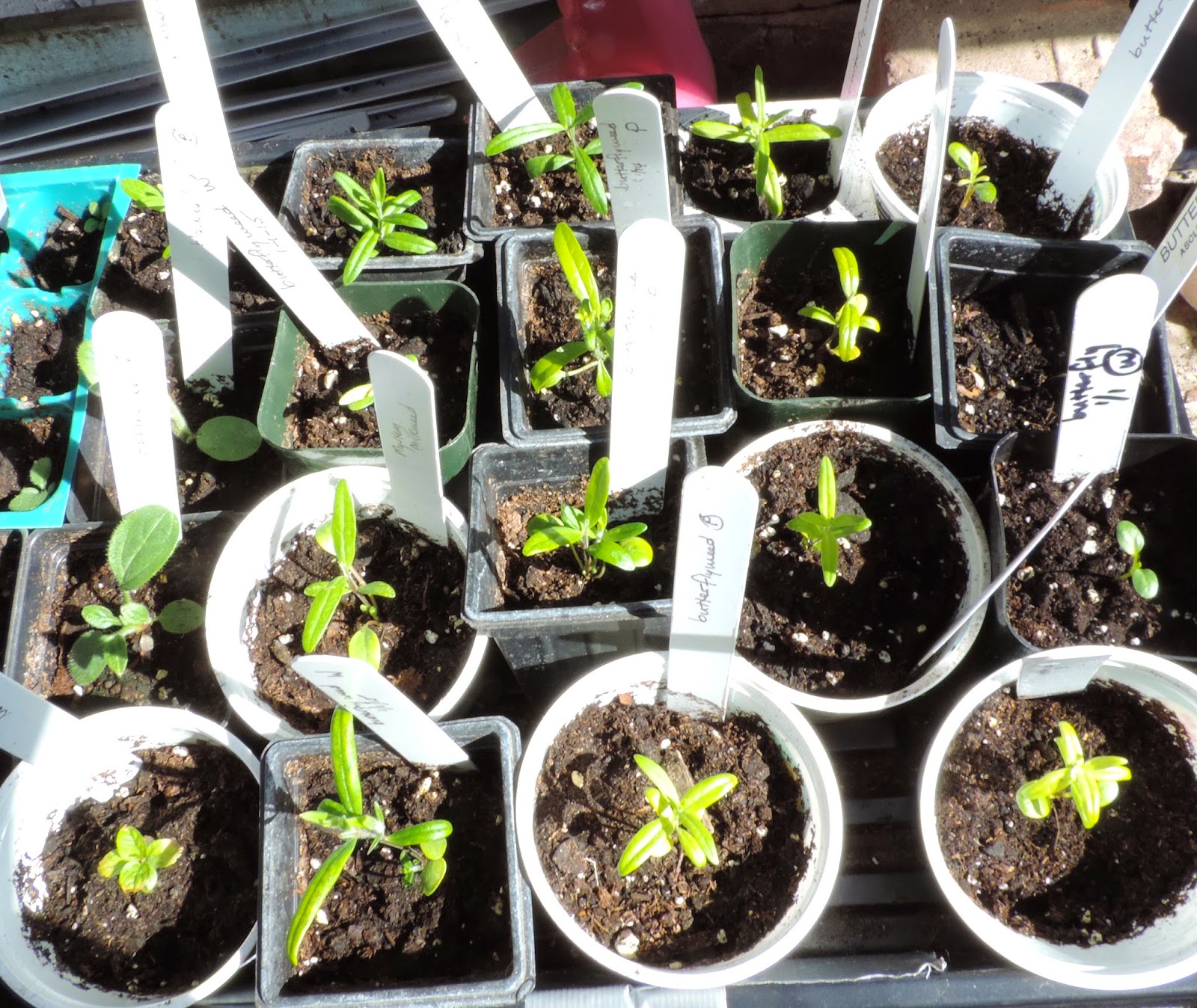 |
| Milkweeds in my monarch way station #5687 |
I see so many people wanting to plant a pollinator garden but in most cases they leave out the milkweed. Maybe it's the "weed" part of the name? I've also heard landscapers say that it's hard to grow, or you can't transplant it because of the delicate tap root.
I do not know why milkweed gets left out when gardeners readily buy non-native butterfly bushes, which can't sustain any native butterfly larvae. So here are five milkweeds that are beautiful, native to the northeast, easy to grow and both swamp and butterfly weed are readily available at most local nurseries here north of Boston. And remember:
milkweed is the only plant monarch caterpillars can eat. You have no more excuses. Go out and plant one of these natives this spring:
BUTTERFLY WEED: Asclepias tuberosa
 |
| "Hello Yellow" butterfly weed |
This has a bright orange flower, grows to about 2 feet tall, prefers part to full sun, flowers until late September in my garden and is drought tolerant. I've never had monarchs lay eggs on it in my garden, they always go for the taller swamp milkweed. But near the Ipswich MA Public Library there's a beautiful pollinator garden with only butterfly weed representing the milkweeds and I've found eggs and caterpillars on it. Butterfly weed also doesn't mind bad soil, I plant it along my road where the road salt and dogs don't seem to bother it like my other perennials.
 |
| Butterfly weed |
SWAMP MILKWEED: Asclepias incarnata
 |
| Ice ballet swamp milkweed |
The native form of this plant has a pink flower, but there is a cultivar called Ice Ballet that is white. I have both in my garden and have found monarch eggs on both colors. Swamp milkweed gets about 36" to 48" tall, prefers part to full sun and can tolerate standing water. Yet, the name is a bit of a misnomer, once established it's actually completely drought tolerant as well.
 |
| Swamp milkweed |
WHORLED MILKWEED: Asclepias verticillata
 |
| Whorled milkweed |
This is a white milkweed, grows to about 24" tall, prefers part to full sun and I have it for the first time this spring in my garden. It's not as easily found in nurseries. I started mine from seeds but they are doing well and I'm looking forward to adding these to my monarch way station.
POKE MILKWEED: Asclepias exaltata
 |
| Poke milkweed |
I am very excited about this native milkweed! It's a tall white milkweed often found growing at the edges of woodlands so is shade tolerant. Many gardeners tell me they can't grow milkweed because they have no sun. Well now you can. I have never seen this at a nursery so I ordered 3,000 seeds and they're sprouting now. My plan is to establish this in my backyard where it's all shade and invasive garlic mustard is always popping up.
COMMON MILKWEED: Asclepias syriaca
I don't recommend this for a small garden, it will not behave and will send its rhizomes everywhere. But if you have a big space or a meadow plant it!
 Yes, you read that right: drought-tolerant monarch waystation. Unless I'm adding a new plant I never water my waystation. In fact, our outdoor water spicket has been broken for two years. I have rain barrels but I only use that sacred water for my veggies, my milkweed seedlings, and when I'm establishing a new plant in the garden.
Yes, you read that right: drought-tolerant monarch waystation. Unless I'm adding a new plant I never water my waystation. In fact, our outdoor water spicket has been broken for two years. I have rain barrels but I only use that sacred water for my veggies, my milkweed seedlings, and when I'm establishing a new plant in the garden.























